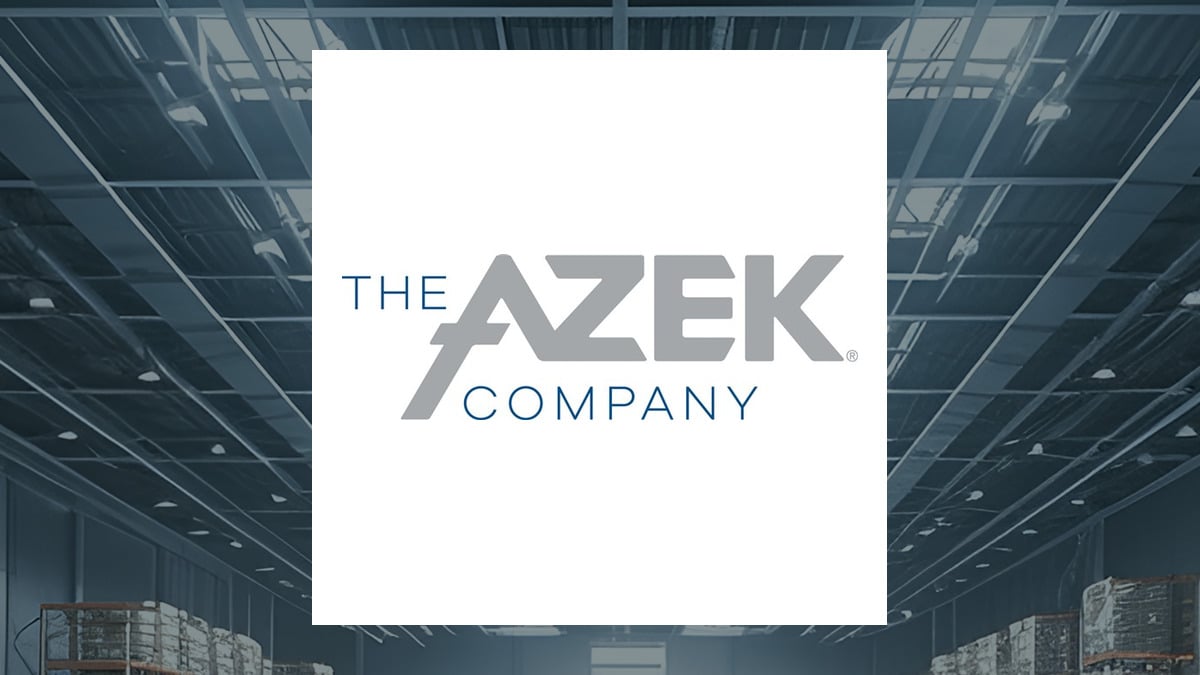
Early last year, Bay Street was rocked by a bombshell departure. As a top executive at CIBC, Laura Dottori-Attanasio was one of the most senior women in Canadian banking—and she was well-placed to succeed Victor Dodig as CEO, which put her in rare air on Bay Street. She’d spent seven years as the bank’s chief risk officer, a crucial position at any financial institution in the aftermath of the global financial crisis, when scores of banks nearly blew up.
In March 2020, she took over personal and business banking—CIBC’s profit centre. So when the bank announced in January 2023 that Dottori-Attanasio was “retiring”—at the age of 55—shock rippled across Bay Street. The bank itself was caught so off guard by her exit that another executive had to add her entire portfolio to his.
Nobody had even considered the possibility. The surprise departure led to fervent speculation about where Dottori-Attanasio would end up. And then the news hit.
She was going to be CEO after all—just not at CIBC. Element Fleet Management Corp. had stolen her away.
Element might not have the same name recognition with retail investors as CIBC does. But it has quietly become one of Canada’s secret stock market stalwarts. Amid fears that the Toronto Stock Exchange is losing its relevance—scorching U.
S. markets are stealing investment capital, private equity is swallowing everything in sight, and junior resource developers, once a staple of the Canadian market, can’t raise money to save their lives (literally)—companies like TFI International, Stantec and Element now all have market valuations of $10 billion or more. And they just keep growing.
Element was created in 2011 by Steve Hudson, who’d previously founded Newcourt Credit Group, once the second-largest non-bank lender in the world. In 1999, he sold it for US$2.4 billion.
After a couple of left turns—backing Hair Club for Men and weight-loss brand Herbal Magic—he decided to recreate Newcourt’s leasing model at Element. There have been some serious bumps along the way, but what’s made Element’s rise so impressive is that its core business model—leasing and servicing fleets of vehicles for corporate clients, such as service vans for cable companies, passenger cars for pharmaceutical reps and small refrigerated trucks for milk producers—isn’t tied to a hot economic trend, like soaring e-commerce sales during the COVID-19 pandemic. Element’s just really good at what it does.
In the first half of 2024, it had a profit of nearly US$200 million on revenue of US$537 million. Market darling Shopify lost US$102 million in the same time frame. But Element is also at an inflection point.
Investors fell in love with it because management pulled off a corporate restructuring for the ages. Hudson had saddled the company with too many messy acquisitions, and a new management team, led by CEO Jay Forbes, fixed everything up. But Forbes wanted out after a gruelling five-year stint (he’s since become CEO of Woodbridge Co.
Ltd., the Thomson family’s private holding company and owner of The Globe and Mail ), which means it’s on Dottori-Attanasio to take Element to new heights. Investors are giddy with what they’ve seen so far.
Since Dottori-Attanasio took over as CEO in May 2023, Element’s shares are up by 43%, more than double the return delivered by the S&P/TSX Composite Index. But as is the case with so many industries, digitization is reshaping Element’s profit model. A car-fleet company might seem immune to this trend, but a little more than half of Element’s revenues come from selling add-on services, and scores of tech companies—from startups to giants—want in on that market.
Just look at what Apple has done with its CarPlay software, which is now regularly used as touchscreen software in new vehicles. It might seem odd for a career banker to be charged with leading a tech revolution. But Dottori-Attanasio was built for this.
“Think of fleet management today as banking 20 years ago,” says Jaeme Gloyn, an analyst at National Bank Financial. Banks used to depend on branches and manual paperwork, but over the past 15 years, fintech companies have tried to upend that business model. Dottori-Attanasio knows what it takes to fend them off, and a year and a half in, she’s already put her stamp on Element with a tech acquisition that will upgrade its software and databases.
She’s also pulling on her time leading CIBC’s risk division to embed a more sophisticated approach to risk management into the company’s culture. “Banks are phenomenal training grounds,” says Dottori-Attanasio. “They’re so large and complex.
And because they’re highly regulated, you get to see how to do things exceptionally well.” As a kid in Témiscaming, Que., Dottori-Attanasio got a taste of what it takes to build a business up close.
Her dad, Frank Dottori, was the founder of Tembec, and he grew it into one of Canada’s dominant forest products companies, all from a single shutdown mill. Instead of joining the family business (which became a public company), Dottori-Attanasio branched into banking after studying finance and economics at Western University. About 15 years into her career, she started making a name for herself at National Bank of Canada.
Though the bank is headquartered in Montreal, its capital markets division has a major Toronto office, and she rose though the ranks in corporate banking, helping manage a division that lends hundreds of millions of dollars to large corporate clients. Investment bankers are often talked about as the big-shots who bring in major M&A and IPO work. But often, it’s the calmer corporate bankers who win those deals by lending large sums to the clients.
David LeGresley, who ran corporate and investment banking for National Bank at the time, thinks the world of Dottori-Attanasio. “A great leader of her team,” he says. “Tough as nails.
Works tirelessly. Strategic.” By 2007, on the executive track at National Bank, she moved back to Montreal, where she made the pivot into risk management to help broaden her expertise.
But just a year in, the political infighting reached obscene levels, according to executives intimately familiar with the situation, and she became a casualty of friendly fire. Four months later, in January 2009, CIBC hired her as its head of corporate banking. Over 14 years at CIBC, Dottori-Attanasio rose and rose, ultimately joining the bank’s executive team as chief risk officer, then taking on its personal and business banking division.
That role put her on the short-list to succeed Dodig—though CIBC’s board wasn’t showing much urgency around succession planning, despite the fact that Dodig’s been in the role since 2014. When Element came calling, Dottori-Attanasio was intrigued. At the time, the company’s stock was finally taking off after a five-year roller coaster ride.
Hudson and his hand-picked CEO, Brad Nullmeyer, had run into trouble, overexpanding through acquisitions including the $8.6-billion deal to buy GE Capital’s fleet business in 2015. The integration of those purchases was sloppy, and customer service and attrition eventually became a glaring problem.
A customer might order a vehicle in Washington, DC, and the car would get shipped to Washington state. Or they’d order new tires..
.and they’d just never arrive. Element’s shares plummeted by 29% in a single day in February 2018, when the company announced a double whammy of bad news: Nullmeyer was leaving, and it had lost a major customer.
Three months later, Forbes—who’d just turned around Manitoba Telecom Services—took over and embarked on a brutal restructuring. His No. 1 task: Fix customer service.
It took a few years, but Element’s operations stabilized, and management started promoting a “capital-light” business model. That may not sound all that sexy, but it’s the kind of thing that makes institutional investors drool. Element isn’t in the business of owning cars and trucks—it just finances leases for its clients—and big-name investors tend to like this model because they don’t get stuck holding onto assets that lose value as they age.
Think of Element as a sort of bank: It’s a lender, but instead of using retail deposits to fund its loans, it borrows in the form of long-term debt, and then lends that money out at a higher rate in the form of leases. The money it makes from doing so is known as net interest income, which comprises almost half of Element’s operating profit. – Laura Dottori-Attanasio, CEO of Element Fleet Management In other words, Dottori-Attanasio is able to put a career’s worth of knowledge to the test.
Her goal now is to instill some rigour and standards around things like lease approvals, so that new loans can be approved quicker, and to ensure there are fewer surprises in the loan book. “When I arrived,” she says, “we were selling leases a bit like we were selling the rest of our services.” The company’s second “capital-light” business is its services division, a catch-all bucket that includes things like vehicle maintenance, registration and fuel monitoring offered to fleet clients.
Because they’re usually fee-based, there isn’t much risk of losing money. Again, Dottori-Attanasio sees parallels between Element’s model and her past life in banking. To win retail clients, banks often lead with the mortgage, then they try to add on services by cross-selling things like wealth management advice.
“Laura’s job is to take Element to the next level,” says board chair Katie Taylor, who also has a rich banking background, having chaired Royal Bank of Canada’s board for a decade. Taylor isn’t the one who hired the new CEO—she joined Element’s board around the same time Dottori-Attanasio took over—but she was impressed from their very first meeting. “I was very taken with her,” Taylor says.
“Good values, hardworking, very smart.” LeGresley adds: “But Laura is also compassionate and highly committed to important causes.” On Bay Street, there’s a tendency for rising execs to get involved with non-profits because, truthfully, the volunteer gigs help get them promoted.
Dottori-Attanasio got involved early and often because she actually cared—and she took the work very seriously. She’s one of the few executives who acknowledges that Bay Streeters get outsized paycheques, and she believes that gives her (and everyone else) a responsibility to donate some of that wealth. She and her husband, Mark, have four children, one of whom has Down syndrome, so they appreciate what it takes to navigate developmental challenges.
Over the years, Dottori-Attanasio has been co-chair of the fundraising committee of the Children’s Aid Foundation of Canada and led the United Way of Greater Toronto’s “major individual giving cabinet,” meaning it was her job to secure substantial gifts from donors. Friends joke that she’s the ultimate fundraiser—she’s such a warm person, but one who borderline thrives on being told “no.” Not a bad characteristic for a new CEO tasked with turning Element into a juggernaut.
Since Dottori-Attanasio took over as CEO in May 2023, Element’s shares are up by 43%, more than double the return delivered by the S&P/TSX Composite Index. Dottori-Attanasio has a three-pillar strategy for boosting Element’s fortunes. Her first priority: growth, ideally organic.
About 50% of the fleet market in North America remains untapped because so many companies still manage their vehicles in-house. Element’s goal is to get them to outsource the task. At the same time, Element wants to beef up its lease approval processes, so the CEO has opened an office in Dublin, a hub for aircraft leasing.
The hope is that Element can attract talent that will add more sophistication to its underwriting process. Dottori-Attanasio’s second focus: digitizing the business. The fleet management industry has largely sidestepped the technological revolution, so when a driver has a problem out on the road, they often have to call into a contact centre and get a human to help.
It’s an extremely slow process. Imagine instead simply logging into an app to find the closest mechanic in Element’s pre-arranged network. Click a few buttons to book an appointment, and maybe you can solve the issue that very day and get back on the road.
And because Element oversees so many cars—1.5 million of them—it uses its scale to negotiate better rates for clients. To that end, Dottori-Attanasio recruited a former colleague, David Attard, who’d been a senior vice-president for digital payments and strategy at both CIBC and President’s Choice Financial.
The third pillar: expanding beyond Element’s core businesses. In August, Dottori-Attanasio made her first acquisition, buying a Tel Aviv–based tech company called AutoFleet for $110 million. AutoFleet’s software can help with things like route optimization—the kind of services that can save Element’s clients money.
She’s also setting Element up for the transition to electric vehicles. Historically, its relationships with car manufacturers, known as OEMs, have been with companies operating in North America, but Asia is dominant in the EV transition, so Dottori-Attanasio has opened a small office in Singapore to make inroads. In the short term, the hope is that all these moves will keep delivering growth.
But there’s also a stealth ambition: to make Element the next global champion built and based in Canada. “Most people don’t know that it’s the largest publicly traded pure-play fleet management company in the world,” Dottori-Attanasio says. If she has her way, it won’t be driving under the radar for much longer.
One day, maybe it’ll even be a household name—just like her former employer. Your time is valuable. Have the Top Business Headlines newsletter conveniently delivered to your inbox in the morning or evening.
Sign up today ..














